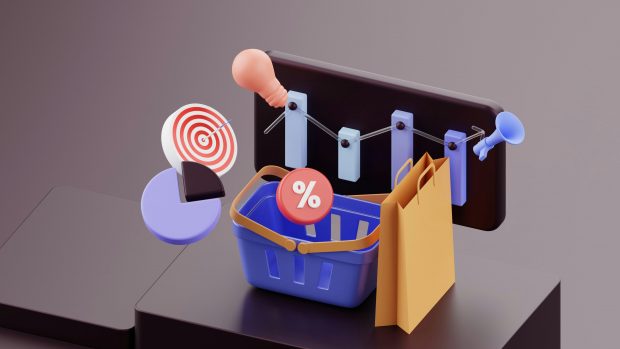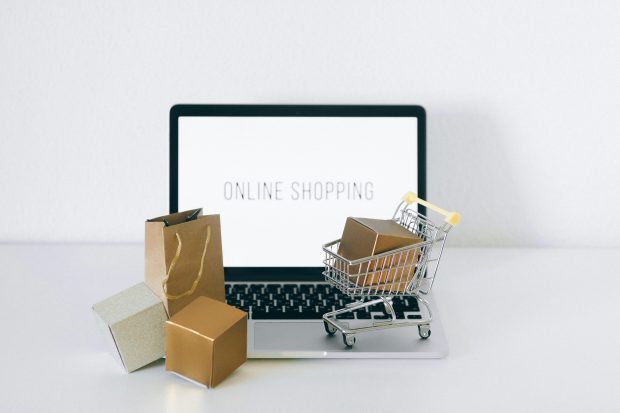Online shopping has changed how we buy things. What started as a simple way to order books or electronics has turned into a complex system where multiple sellers compete on the same platform. Pigu.lt, the largest e-commerce centre in the Baltic states, offers a good example of where this trend might be heading.

Since 2019, Pigu.lt has operated as a marketplace platform, allowing thousands of different sellers to offer their products alongside Pigu.lt’s own inventory. This shift from a single retailer to a multi-vendor platform reflects broader changes happening across the e-commerce sector. Let’s look at what this means for shoppers and what we might expect in the coming years.
Why Marketplaces Are Taking Over
The marketplace model makes sense for several reasons. For shoppers, it means access to millions of products in one place. You don’t need to visit multiple websites or compare prices across different stores. Everything is there, with standardised checkout processes and familiar payment methods.
For sellers, marketplaces provide ready-made infrastructure. A small business doesn’t need to build its own website, payment system, or marketing strategy from scratch. The platform handles technical details, while sellers focus on their products and customer service.
Pigu.lt’s approach shows how this model works in practice:
- The company manages logistics through physical stores in major Lithuanian cities.
- Delivery partnerships with multiple terminal networks provide flexible pickup options.
- This infrastructure serves both the platform’s own products and those from partner sellers.
- Customers can choose between home delivery, store pickup, or terminal collection.
The efficiency gains are substantial. Instead of each seller building separate delivery networks, they tap into existing infrastructure. This keeps costs down and improves service quality.
The Trust Factor
One challenge marketplaces face is trust. When you buy from a marketplace, you’re technically buying from individual sellers, but most people associate the purchase with the platform itself.
Pigu.lt handles this by clearly marking which products come from their own inventory and which come from partners. Different rules apply to each. The loyalty currency, for instance, works primarily with the platform’s own products. Partner sellers operate under their own policies, though they must meet certain standards to list on the platform.
The warranty and return policies also differ between direct sales and partner sales. This creates some complexity, but the platform tries to make it clear before purchase. Customers can check seller information and policies during checkout.

Loyalty Programs in a Multi-Vendor Environment
Loyalty programs get complicated when multiple sellers are involved. Pigu.lt’s solution is a cashback-style system that rewards frequent shoppers with currency they can use on future purchases.
The system has some restrictions. Certain categories allow higher coverage than others. Some products don’t qualify at all. This creates a two-tier system where platform loyalty benefits apply mainly to the platform’s own inventory.
It’s practical from a business standpoint — the platform can’t afford to subsidise loyalty rewards for all partner sales. But it does mean shoppers need to pay attention to who’s actually selling what they want to buy.
Physical Stores in a Digital World
While many e-commerce companies close physical locations, Pigu.lt opened a major retail space in Vilnius in 2021. This isn’t about abandoning online retail. It’s about giving customers options.
Some people want to see products before buying. Others need something today, not tomorrow. Physical stores serve both purposes while also handling returns and providing customer service that’s easier to manage face-to-face. You can order online and pick up in-store, often within a day. This combines the convenience of browsing at home with the speed of physical retail.
The stores also handle warranty service. If something breaks, you can bring it to a store location rather than shipping it back. The staff can direct you to the manufacturer’s service centre or handle the process themselves for certain products.
Multiple Payment Options Matter
Pigu.lt offers various payment methods to accommodate different preferences:
- Cash or card on delivery
- Credit and debit cards online
- Digital wallets like Apple Pay and Google Pay
- Bank transfers
- Instalment plans for larger purchases.
The variety matters because different customers have different preferences and needs. Research shows that one out of ten abandoned carts happens because the preferred payment method isn’t available. By offering multiple options, marketplaces reduce this friction.

The Environmental Angle
One interesting feature: Pigu.lt accepts old electronics and appliances for proper disposal. When you buy new equipment, the delivery team can take away your old item if you request it in advance.
This matters more than it seems. Electronic waste is a growing problem, and many people don’t know how to dispose of old devices properly. By integrating disposal into the purchase process, the platform removes friction and encourages responsible behaviour. It’s also good business. Customers appreciate the convenience, and the company builds goodwill.
Challenges Ahead
The marketplace model isn’t perfect. Quality control becomes harder when you’re not directly managing all inventory. Some partner sellers might ship slowly, provide poor customer service, or sell items that don’t match descriptions.
The platform’s approach is to clearly distinguish between its own products and partner products, but this places responsibility on customers to check before buying. That works for informed shoppers; less experienced ones might feel confused if they don’t realise they’re buying from a third party. The loyalty program’s complexity also poses challenges.
Different coverage levels for different categories, expiration periods, and various exclusions require customers to pay close attention. Simplicity usually wins in consumer products. Competition is intensifying, too. International players show interest in Baltic markets, while local competitors face similar pressures.
What This Means for Shoppers
The marketplace model shifts power toward customers in some ways while creating new complications in others. You get more choice, better prices from seller competition, various delivery options, and an overall improved shopping experience. You also get loyalty rewards if you shop consistently on the platform.
But you need to be more careful:
- Check who’s selling each product.
- Understand which return policies apply.
- Know where your loyalty currency can and can’t be used.
- Read reviews of both products and individual sellers.
The future of online shopping probably looks a lot like this current model: large platforms hosting multiple sellers, with sophisticated logistics networks, integrated physical locations, and personalised experiences driven by data. Success will depend on managing complexity while maintaining trust.
The companies that figure out how to deliver marketplace benefits without marketplace confusion will win. Pigu.lt shows what’s possible, but also reveals the challenges that come with growth and diversification. The next few years will determine whether this model can scale while keeping customers satisfied.
For shoppers, the key is staying informed and taking advantage of the benefits while avoiding the pitfalls. The tools are there — comparison options, review systems, flexible delivery — but they only work if you use them properly.








